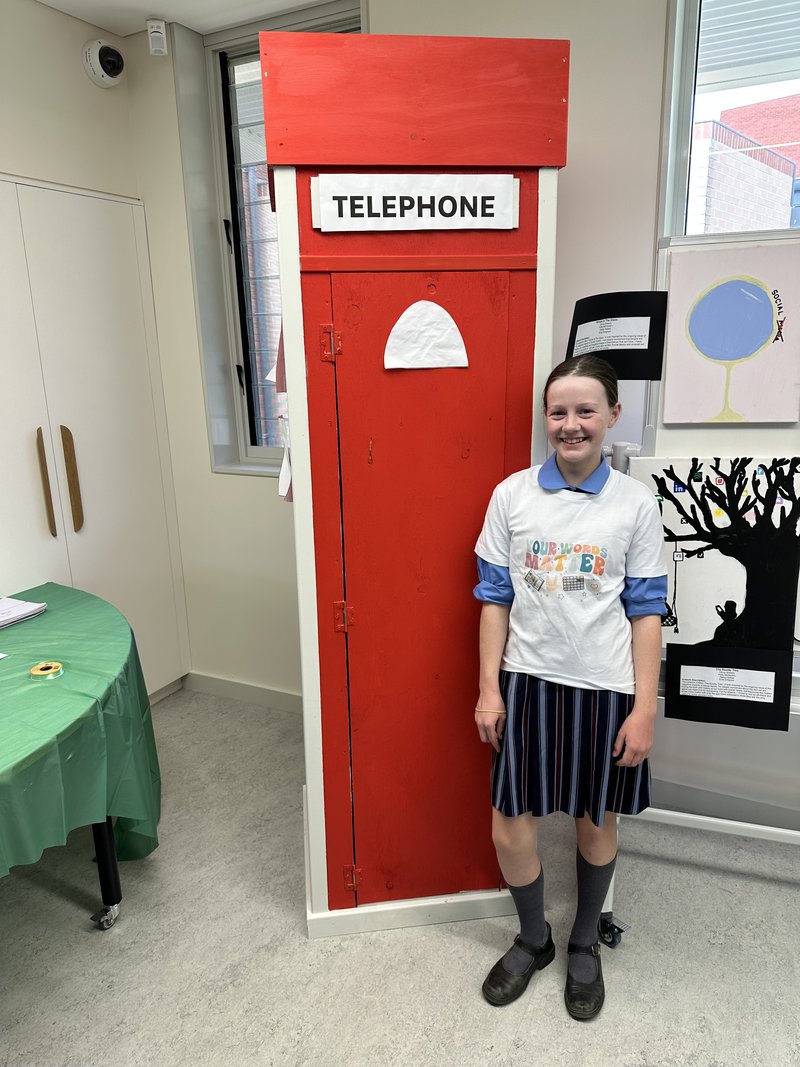‘Tricks and mind games’: The real reason your kids won’t put down their device
Does this image look familiar? That's because we've all fallen for the same tactics currently being used on our kids.
Chris Zomer and Sumudu Mallawaarachchi
Rose: 'Happy challenge Liverpool and face them tomorrow'
Ever found yourself unable to resist checking out a social media notification? Or sending a random picture just to keep a Snapchat “streak” going? Or simply getting stuck staring at YouTube because it auto-played yet another cute cat video?
If so, you’re far from alone. And if we adults can’t resist such digital temptations, how can we expect children to do any better?
Many digital environments are not designed with the best interest of users in mind – and this is especially true of games, apps and platforms commonly used by kids and teens.
Designers use persuasive design techniques to make users spend more time on apps or platforms, so they can make more money selling ads. Below, we explain some of the most common design tricks used in popular games, social media and apps.
Decision-making made easy 🔀
Social media and streaming platforms strive to provide “seamless” user experiences. This makes it easy to stay engaged without needing to click anything very often, which also minimises any obvious opportunities where we might disengage.
These seamless experiences include things such as auto-play when streaming videos, or “infinite scrolling” on social media. When algorithms present us with a steady flow of content, shaped by what we have liked or engaged with in the past, we must put in extra effort to stop watching. Unsurprisingly, we often decide to stay put.
Rewards and dopamine hits 🧠
Another way to keep children engaged is by using rewards, such as stars, diamonds, stickers, badges or other “points” in children’s apps. “Likes” on social media are no different.
Rewards trigger the release of a chemical in our brains – dopamine – which not only makes us feel good but also leaves us wanting more.
Rewards can be used to promote good behaviour, but not always. In some children’s apps, rewards are doubled if users watch advertisements.
Loot boxes and ‘gambling’ 💰
Variable rewards have been found to be especially effective. When you do not know when you will get a certain reward or desired item, you are more likely to keep going.
In games, variable rewards can often be found (or purchased) in the form of “loot boxes”. Loot boxes might be chests, treasures, or stacks of cards containing a random reward. Because of the unpredictable reward, some researchers have described loot boxes as akin to gambling, even though the games do not always involve real money.
Sometimes in-game currency (fake game money) can be bought with real money and used to “gamble” for rare characters and special items. This is very tempting for young people.
In one of our (as yet unpublished) studies, a 12-year-old student admitted to spending several hundred dollars to obtain a desired character in the popular game Genshin Impact.
The lure of streaks 🔥
Another problematic way of using rewards in design is negative reinforcement. For instance, when you are at risk of a negative outcome (like losing something good), you feel compelled to continue a particular behaviour.
“Streaks” work like this. If you do not do the same task for several days in a row, you will not get the extra rewards promised. Language learning app DuoLingo uses streaks, but so does Snapchat, a popular social media app. Research has shown a correlation between Snapchat streaks and problematic smartphone use among teens.
Streaks can also make money for apps directly. If you miss a day and lose your streak, you can often pay to restore it.
Loss of reputation 👎
Reputation is important on social media. Think of the number of Facebook friends you have, or the number of likes your post receives.
Sometimes designers build on our fear of losing our reputation. For instance, they can do this by adding a leaderboard that ranks users based on their score.
While you may have heard of the use of leaderboards in games, they are also common in popular educational apps such as Kahoot! or Education Perfect. Leaderboards introduce an element of competition that many students enjoy.
However, for some this competition has negative consequences – especially for those languishing low in the ranks.
Similarly, Snapchat has a SnapScore where reputational loss is still at play. You do not want a lower score than your friends! This makes you want to keep using the app.
Exploiting feelings of connection 🥰
Another tool in the designers’ bag of tricks is capitalising on the emotional ties or connections users form with influencers or celebrities on social media, or favourite media characters (such as Elmo or Peppa pig) for younger children.
While these connections can foster a sense of belonging, they can also be exploited for commercial gain, such as when influencers promote commercial products, or characters urge in-app purchases.
What can parents do? 🤷
Persuasive design isn’t inherently bad. Users want apps and games to be engaging, like we do for movies or TV shows. However, some design “tricks” simply serve commercial interests, often at the expense of users’ wellbeing.
It is not all bleak, though. Here are a few steps parents can take to help kids stay on top of the apps:
• have early and ongoing discussions with children about ideas such as the underlying commercial intent of what they are engaging with
• model good digital choices of not giving in to persuasive design, such as by avoiding digital distractions yourself
• use trustworthy resources to help in digital decision-making, such as Common Sense Media and Dark Pattern Games.
For the moment, the responsibility for managing children’s interactions with the digital realm falls largely on individuals and families.
Some governments are beginning to take action, but measures such as blanket age-based bans on social media or other platforms will only shield children temporarily. A better approach for governments and regulators would be to focus on safety by design: the idea that the safety and rights of users should be the starting point of any app, product or service, rather than an afterthought.
Finding Your Daughter's Passion
Jennifer Oaten
September 18, 2024
I cannot emphasise enough how important it is for our girls to find something they are passionate about!
Growing up, I was fortunate to have parents who encouraged me to follow my interests, whether that meant spending hours at the beach, teaching my siblings, or joining netball, basketball or tennis groups. These experiences taught me that passion isn’t just about doing what you love; it is about finding what makes you feel alive and then pursuing it with everything you’ve got. With curiosity and determination, I learned that trying new things was critical and that anything is possible if we are prepared to be vulnerable.
I want your daughters to feel that same sense of possibility. It is important that we encourage every girl to explore, experiment, and discover what makes her heart sing. Whether it is a love for music, a fascination with science, or a passion for sport, dance or reading, education should be a journey of self-discovery, not just a path to grades. Together, we can help your daughters find the things that light them up and make them believe they can achieve whatever they set their minds to.
Real-Life Stories to Inspire Passion
Clare Perrott: Keeping Her Passion for Music Alive
Clare discovered her love for music while she was at Santa Maria and has kept it alive ever since. Music became her source of joy and confidence, something that helped her balance school life and find her own voice. Her story is a great reminder that not every passion has to fit a conventional career path. It is about finding what brings you joy. Read Clare’s full story here.
Deanna McBride: Pursuing a Passion for Neonatal Nutrition
Deanna’s journey into neonatal nutrition started in her school years and eventually shaped her entire career. She combined a love for science with a desire to help others — showing that a passion can often come from wanting to make a real difference in the world. It is a great example of how talking to your daughter about what causes or fields they feel drawn to can help them find their path. Learn more about Deanna’s journey here.
Lana: Earning a Technology Scholarship Through Passion
Lana’s enthusiasm for technology led her to win a scholarship, and it all began with a spark of interest she decided to pursue. Her story shows us the value of stepping into modern fields like technology, even when they might seem like unconventional choices. Encouraging your daughter to explore areas like STEM can open up new opportunities and build confidence. Discover Lana’s inspiring story here.
Tayla Pauley: Breaking Barriers in Heavy Diesel Mechanics
Tayla discovered her passion for heavy machinery after starting her career in agricultural science. Following a year at university, she took a gap year to work on a mine site, which led to her apprenticeship in heavy diesel mechanics with Komatsu. Tayla’s journey highlights her determination to succeed in a male-dominated field, where she continues to grow and encourage more women to enter trades. Her story shows that with confidence and persistence, any dream is within reach. Read Tayla’s full story here.
How You Can Help Your Daughter Find Her Passion?
After reading about Clare, Deanna, Lana and Tayla, it is clear that passion can lead to incredible journeys. As parents, you have such an important role in helping your daughters find out what lights them up. Here are some ideas to help you support them:
• Encourage Exploration: Offer a variety of activities and experiences without pressure to excel. Let them find their own way.
• Listen and Observe: Notice what makes your daughter excited and ask open-ended questions about it.
• Create a Supportive Environment: Celebrate all of her interests, big or small. Confidence grows when she feels her choices are valued.
• Model Passion: Share your own hobbies or passions, and show that finding what you love takes time.
• Foster a Growth Mindset: Help her see challenges as opportunities and praise the effort she puts in, not just the end result.
• Allow for Downtime: Make sure she has some space to explore her thoughts and interests without a packed schedule.
• Be Open to Change: Support her as her passions evolve — what excites her now might change, and that is okay.
• Connect with Role Models: Introduce her to people who can inspire her in areas she is interested in.
• Encourage Collaboration: Support her involvement in groups or clubs where she can find like-minded peers.
• Keep it Fun: Remember, this is about joy and discovery. Celebrate the small wins along the way!
Final Thoughts
Helping your daughter find her passion is an ongoing journey — and it starts with a conversation, a little bit of curiosity, and a whole lot of support. So why not start today? Ask her what excites her most or try a new activity together. You never know where it might lead for you or your daughter!





































































































